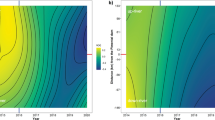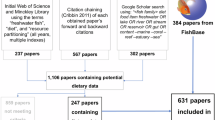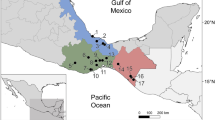Abstract
IN the Journal of the Linnean Society, Zoology, 47, No. 313, pp. 99–140, 1925, Oliver has outlined what is virtually a new theory to account for the distribution of South Pacific plants and animals. It is of interest to note that the fresh-water fishes of New Zealand, not included in the above paper, appear all to conform with the suggestions: (1) Their present habits and nature are such that they may easily have crossed small areas of ocean and independent species originated in the separate land masses; or (2) marine species of a restricted habitat have taken to a life in fresh water, changing in form to meet the new conditions. Almost simultaneously Oliver (p. 109) and Skottsberg (Bishop Museum Bull. 16, p. 22, 1925) have independently suggested the modification of species and increase in number of forms after arriving at a new region.
This is a preview of subscription content, access via your institution
Access options
Subscribe to this journal
Receive 51 print issues and online access
$199.00 per year
only $3.90 per issue
Buy this article
- Purchase on SpringerLink
- Instant access to full article PDF
Prices may be subject to local taxes which are calculated during checkout
Similar content being viewed by others
Author information
Authors and Affiliations
Rights and permissions
About this article
Cite this article
PHILLIPPS, W. Origin of the Fresh-water Fishes of New Zealand. Nature 117, 485–486 (1926). https://doi.org/10.1038/117485a0
Issue date:
DOI: https://doi.org/10.1038/117485a0



